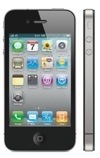A new study by Juniper Research (www.juniperresearch.com) has found that revenue from smart audio hardware will more than triple over the next four years, rising from an estimated $1.4 billion this year to over $5.5 billion by 2020.
While the research group expects part of this to be driven by ear-based wearables like the Bragi Dash and HERE Active Listening, the category will be most successful in the smart home space, with Amazon Echo, Google Home and other unit-based smart audio devices vying for popularity as the next platform for smart devices. Juniper found that the reason for the dominance of home-based smart audio is two-fold: consumers are not yet willing to talk to machines in public, and also that smartphones can provide similar functions through simple earphones with a mic. These factors combine to limit the market for people who want a digital assistant device with them on-the-go.
Home-based smart audio devices, however, operate in a private environment, overcoming the social reluctance, and do not have to challenge the smartphone to the same degree. For this reason Juniper expects more success from unit-based smart audio devices than hearables.
There will however be a smaller market for hearables that offer various audio features, like active noise cancellation and call handling as well as providing audio, but the biggest market for these will be fitness devices. These can provide accurate biometrics as well as voice feedback from a piece of coaching software, but only a certain kind of consumer will buy that sort of device.
“Smart speakers win out because while they also need a context, their form factor gives them an almost universal one, while hearables fill specific audio niches,” said research author James Moar. “As a result, smart speakers and hearables will fill very different roles, despite relying on similar software capabilities in many cases.”



